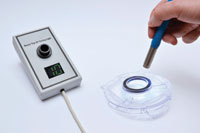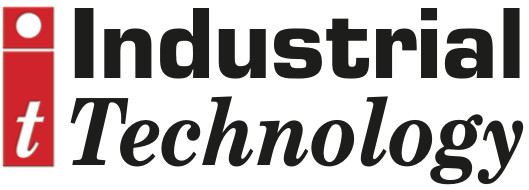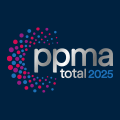
Posted to News on 21st Sep 2015, 00:00
The benefits of advanced light cure adhesives
With the help of the experts at Master Bond, we take a closer look at how environmentally friendly, visible light cure adhesive systems can improve safety and reduce costs on the plant floor.

>Light cure adhesives already have a compelling value proposition thanks to their easy application and fast cure. The latest technology breakthrough makes these adhesives even more valuable by enabling a cure to take place under a visible light wavelength of 405 nanometers (nm).
>Traditional light cure adhesives, by contrast, cure under ultraviolet (UV) light sources with wavelengths between 250 and 365nm. A few dozen nanometers of wavelength may not seem like a big deal, but the implications are profound from both design and production standpoints. For design engineers, the ability to fully cure adhesives under visible light opens up a range of bonding, encapsulation and sealing applications that were previously not suitable for light cure products.
>On the factory floor, shifting to visible light eliminates the need for expensive UV lighting equipment in favour of inexpensive light emitting diode (LED) lamps. Because commercial UV lights have the potential to cause eye injuries and skin burns, visible light also improves worker safety.
>The new adhesive technology from Master Bond, LED401, required the development of a proprietary curing agent that not only allows it to cure fully under a visible light source but also preserves a wide range of desirable engineering properties. For example, while there have been previous attempts to shift light cures to longer wavelengths, and there are plenty of products on the market that do cure at or close to 400nm, a common problem is a curing defect known as oxygen inhibition. This defect occurs when atmospheric oxygen curbs the free-radical polymerisation process that cures almost all UV adhesives. Its telltale sign is a tacky, partially cured surface.
>Oxygen inhibition is most pronounced in applications that lack a barrier to atmospheric oxygen. For example, oxygen inhibition would tend to be worse in a conformal coating application with an open air cure than it would be in an application that put the adhesive between layers of glass. Applications with thick adhesive cross sections also increase the potential for oxygen inhibition, which in the past ruled out many potting and encapsulation applications.
>A common strategy for minimising oxygen inhibition is picking adhesives that cure under more intense, shorter wavelength UV light. Unfortunately, this strategy is at odds with a shift to longer wavelength cures. The Master Bond LED400 adhesive series eliminates this 'catch 22' altogether. Even with their less intense light requirements, LED401 systems cure with a surface that's best described as glassy smooth and completely tack-free.
>LED adhesives work with a wide variety of substrates, including those that block UV light transmission. They also cure deeply. The full cure extends from the surface down to sections as thick as 1/8 inch and entails no sacrifice of final physical or mechanical properties. This depth of cure makes them suitable for use as an encapsulant, which has in the past been a problem for conventional light cure products.
>Master Bond LED adhesives have more going for them than their breakthrough curing behaviour. Once fully cured, they offer a range of desirable engineering properties, including:
>* Adhesion to a variety of glass, polycarbonates and acrylics as well as many other polymers and metals.
>* Chemical resistance to water, fuels and oils, plus many acids and bases.
>* Dimensional stability and low shrinkage.
>* Electrical insulation properties.
>Most grades of Master Bond's LED400 adhesives are optically clear. For example, LED401 exhibits a very slight amber tint, though this does not hinder light transmission in any significant way. LED401 White, is an opaque white grade, that has been formulated for applications that don't require optical clarity.
>By driving down the cost and complexity of production light sources, the ability to cure with visible light eliminates the expense of buying, installing and maintaining production UV lamps. These lamps, which can cost thousands of dollars, represent one of the biggest capital equipment barriers to using UV adhesive systems. Master Bond LED400 adhesive series, by contrast, will cure under any light source capable of emitting light at 405 nm wavelengths with an intensity of 1-4W/cm2. Many off-the-shelf LED lights, including inexpensive spot lamps, will meet this criteria, though it's worth confirming the specifications of the light with its vendor just to
>be sure.
>Under the right light source, cure times are fast. In thinner sections, full cures can be achieved in 15-30 seconds, or sometimes less. Thicker sections do require longer cure times, but usually less than a minute.
>Moving to visible light sources also eliminates a potential safety hazard from the shop floor. While most UV cure lines run safely day in and day out, they do carry the risk of eye injuries and skin burns if their operators are not careful. The lower intensity LED lights used for our new adhesive line pose no such threat.






